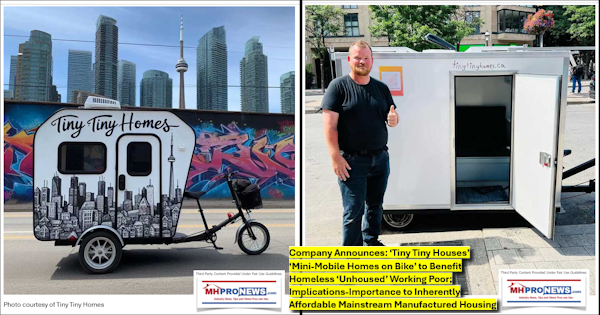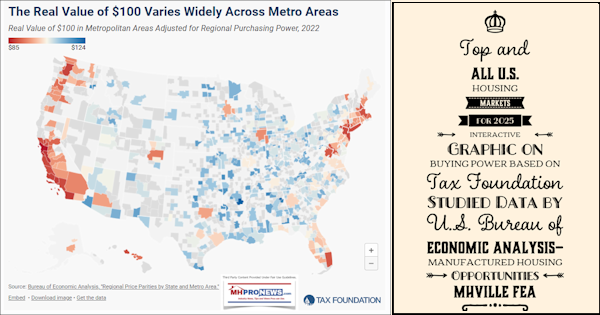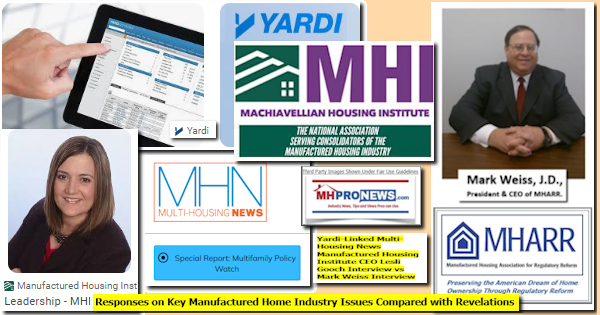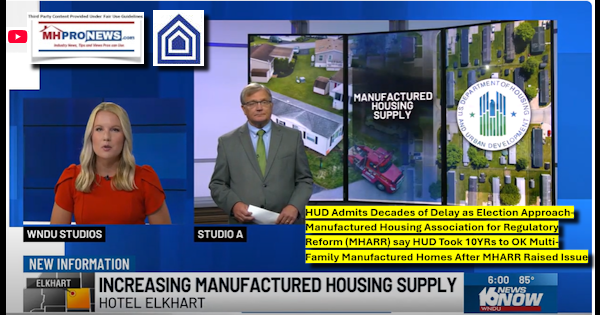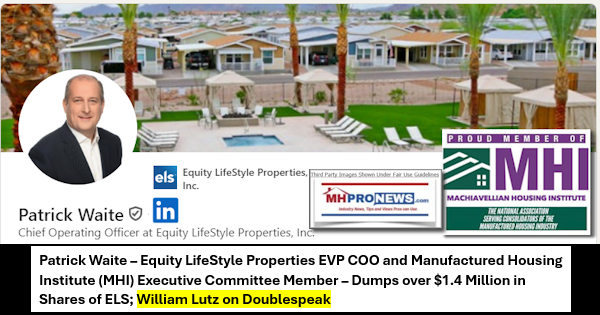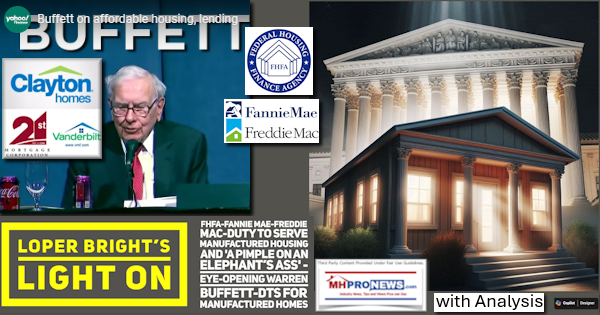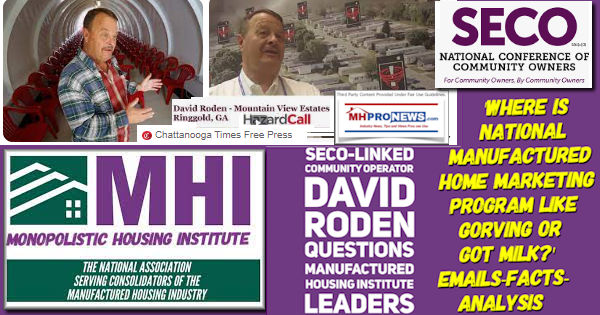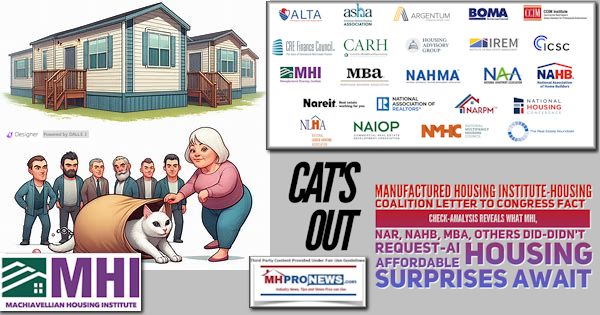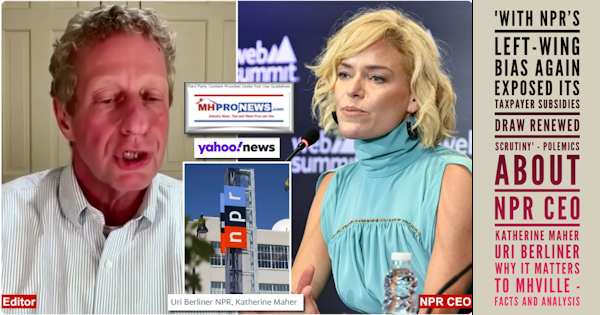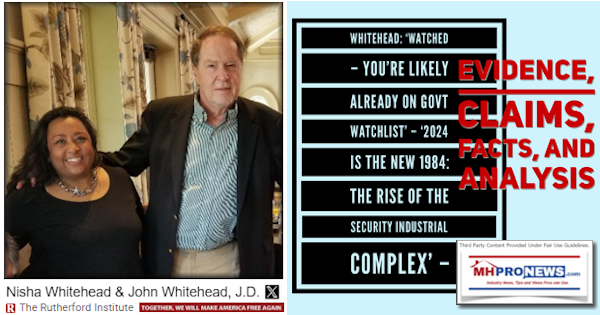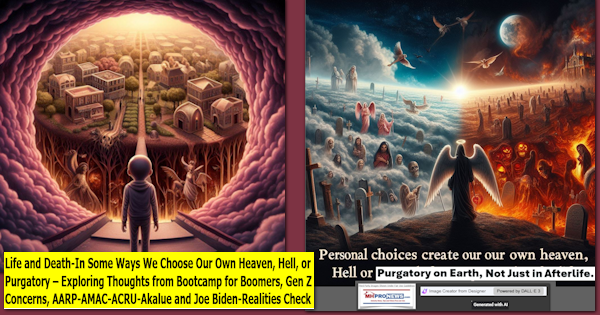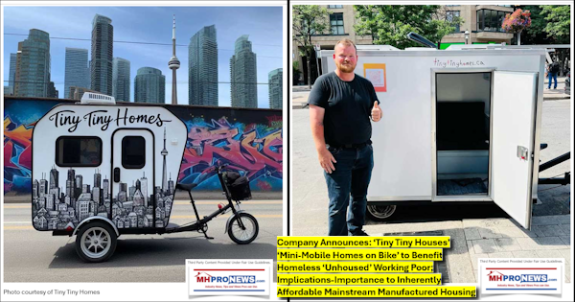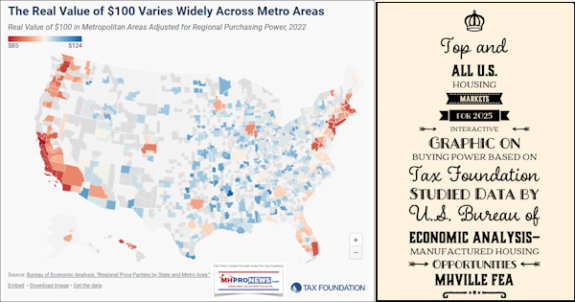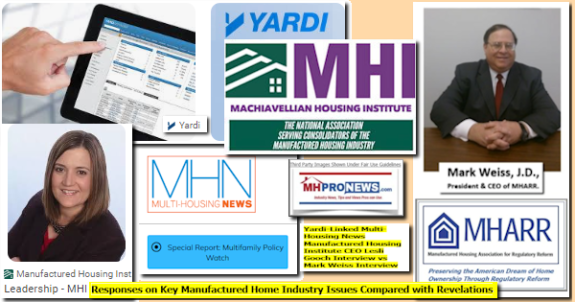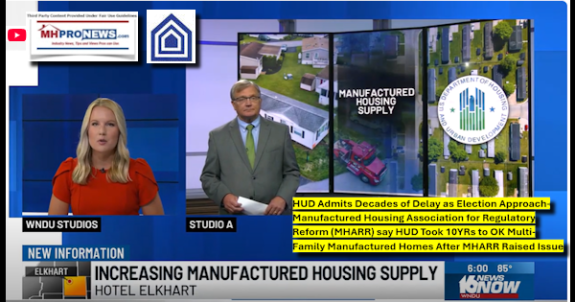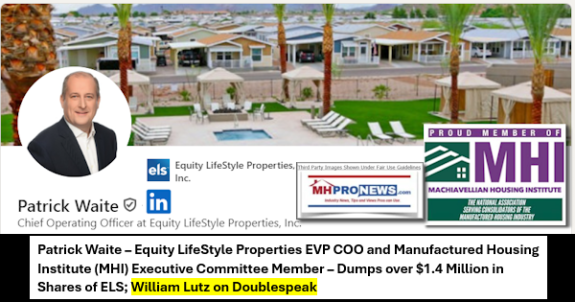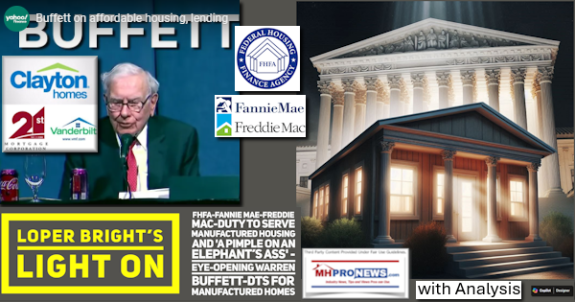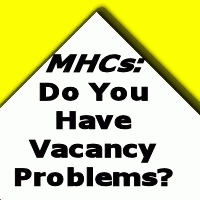Colorado Public Radio (CPR) and the Manufactured Housing Institute (MHI) CEO Lesli Gooch have both made clear that MHI supports H.R. 7651 – the “Manufactured Housing Affordability and Energy Efficiency Act of 2022.” CPR points to a HousingWire op-ed by Gooch as evidence, under the utopian headline “Cheap, energy-efficient manufactured homes? New federal standards aim for both.” The poster person for Sam Brasch’s article for CPR? Angela Maria Ortiz Roa, “who works in communications and climate justice for the City of Boulder, said energy prices are one of the few downsides of her [manufactured home] unit.” Despite CPR’s about us page claim that “As curious human beings, we choose to ask, listen and learn, and seek multiple points of view” Brasch’s article fail to get any remarks from the Manufactured Housing Association for Regulatory Reform (MHARR), which leaves readers with only Gooch and MHI ‘speaking’ for the manufactured housing industry. Ortiz Roa is cited by Brasch saying: “While she tries to keep her thermostat low in the winter, Roa said her bills often top $100 a month due to drafts and a lack of insulation.” But Hashtag Colorado Life on 4.21.2022 said “According to a study on utilities ranked by state, the average monthly utility bill in Colorado is $241, putting it somewhere in the middle of the pack.” Colorado Politics said on 12.30.2021 that “In Colorado Springs, residents will see their energy bills spike this winter by an average of $28.52 per month – from $261 to $289.” Restated, Roa’s complaint cited by CPR ironically makes MHARR’s point that on a per home basis, manufactured homes are less costly to heat and cool than their conventional housing counterparts.
This MHProNews Masthead editorial will provide more evidence that madness, hidden agendas, or duplicity appear to be more common in politics, regulations, advocacy, and reporting.
MHARR has for years consistently opposed the DOE energy rules and its ‘flawed’ process. “DOE Resorts to Deception and Misdirection to Advance Its Flawed Energy Rule for Manufactured Housing, said MHARR recently. But CPR’s Brasch is correct is pointing to MHI’s support for “H.R. 7651 (IH) – Manufactured Housing Affordability and Energy Efficiency Act of 2022.”
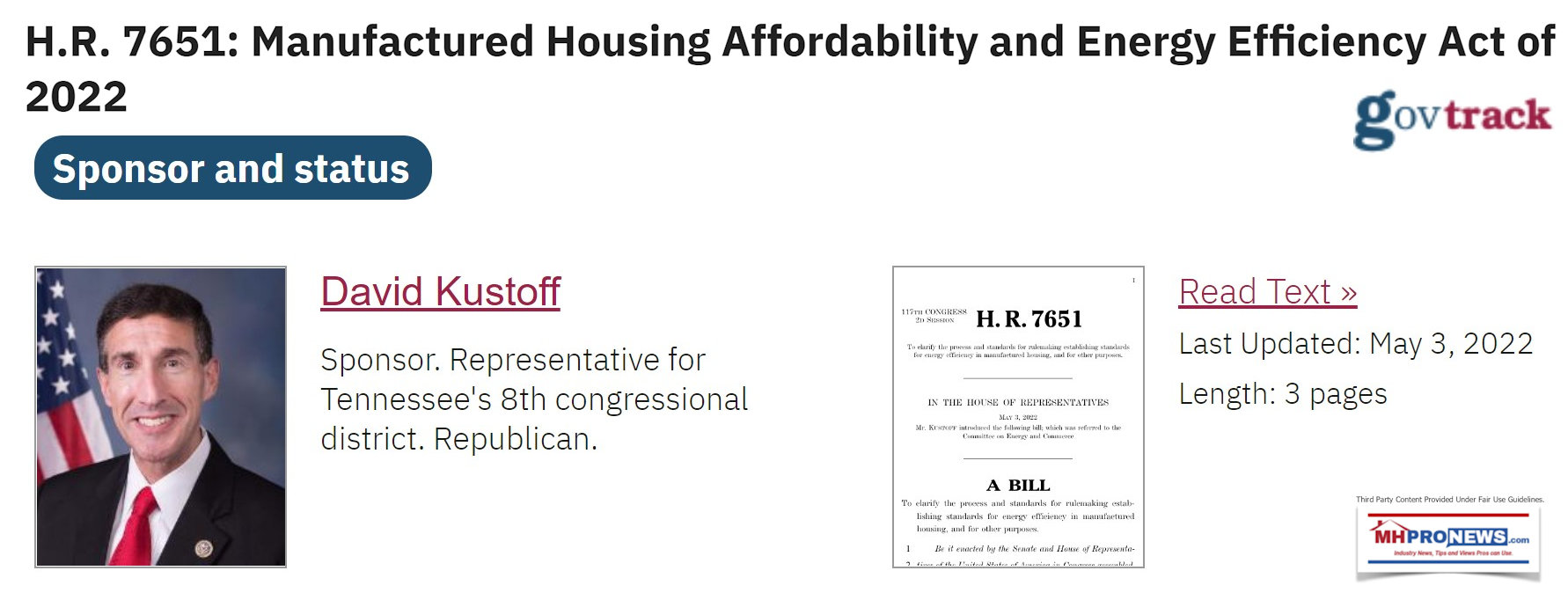
Per the evidence provided by GovTrack, this ‘solution’ to the threat of regulations that could cost millions their opportunity for lower cost home ownership that Roa and others largely extol that is offered by MHI is no solution at all. At 9:09 AM on 6.9.2022, per GovTrack the MHI-backed H.R. 7651 “This bill has 4 cosponsors — 4 Republicans — not including its sponsor,” who is David Kustoff (R-TN80). Here is the snapshot per GovTrack.
 Introduced
Introduced
May 3, 2022
117th Congress (2021–2023)
Status
Introduced on May 3, 2022
This bill is in the first stage of the legislative process. It was introduced into Congress on May 3, 2022. It will typically be considered by committee next before it is possibly sent on to the House or Senate as a whole.
Other activity may have occurred on another bill with identical or similar provisions.
Cosponsors
4 Cosponsors (4 Republicans)
Prognosis
1% chance of being enacted according to Skopos Labs”
Why does Skopos Labs say the odds of passage are just 1 percent?
“The bill is assigned to the House Energy and Commerce committee. The bill’s primary subject is Energy.” That committee is chaired by a Democrat, notes GovTrack, and the House is in Democratic hands. Additionally, there is no companion Senate bill at this time. There is a Democrat in the White House. The DOE Secretary, Jennifer Granholm, is a Democratic appointee. Does that paint a sufficient picture for MHI to be able to connect the dots?
MHI admits the DOE energy rule that is now counting down to implementation will harm manufactured home producers by raising costs, by failing to consider standards implemented by HUD that have worked for years, and have benefited millions of consumers.
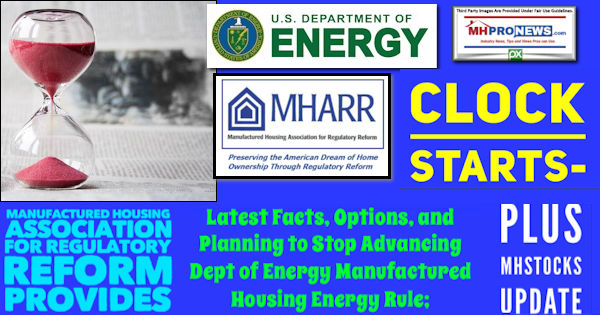
What MHI downplays is their role behind the scenes in working with DOE in bringing this threat to this point in time.

CPR has arguably done its readers no favors by presenting this report as one that offers a balanced view of this topic. As even this abbreviated fisk of Brasch’s piece revealed it to rather be lacking in balance. It states the viewpoint of what MHARR calls 'energy interests,' but fails to reflect the concerns of manufactured housing independents, or the consumers who may not realize that their shot at affordable home ownership could slip away if this DOE rule goes into effect.
Similarly, MHI is revealed by a close scrutiny of the facts to be adept at getting headlines and publicity but seems oddly plagued by a failure to do accomplish its claimed mission of representing “all segments” of manufactured housing.
MHARR is per sources planning a response. They have called on the entire industry to join together and sue to stop this harmful DOE energy rule. What seems unlikely is that MHARR will engage in litigation if MHI refuses to do so. Put differently, the very type of affordable and energy saving manufactured home that Roa is overall so pleased with could be denied to others. HUD has always had energy standards for manufactured homes, and to say or imply otherwise is an egregious error.
Yet, for years, MHI has danced, pranced, and romanced at swank locales, touting their photo and video opportunities, without showing any progress on key issues. Those issues include not only the DOE energy rule but also getting the Duty to Serve (DTS) Manufactured Housing properly implemented by the FHFA, or the Manufactured Housing Improvement Act of 2000 (MHIA or 2000 Reform Law) properly implemented by HUD. And MHI now thinks that a one-legged bill without a Senate companion or Democratic or White House support will be passed into law?
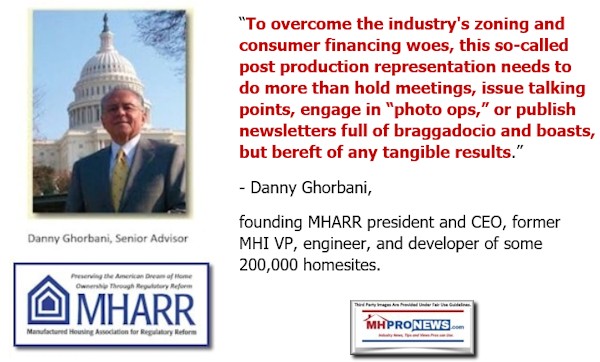

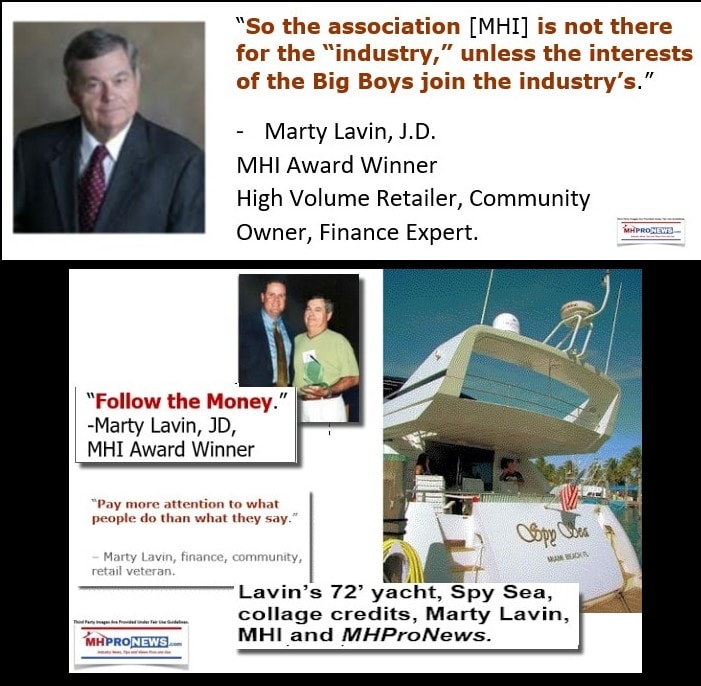
Skopos Labs may be too generous in saying there is a 1 percent chance for passage. The odds, for those who understand how a bill becomes law, are closer to zero. To grasp how MHI’s dominating brands benefit from industry underperformance, which yields consolidation of smaller brands by larger ones, see the linked reports to learn more. Meanwhile, CPR ironically ended on this note saying their poster person Roa believes that "people need cheaper homes that don't doom residents to decades of high energy costs." As this column has briefly illustrated above, modern manufactured homes already do precisely that, because for those who feel a draft on their bare toes in the winter, socks and caulk in the correct spots can work wonders. ##
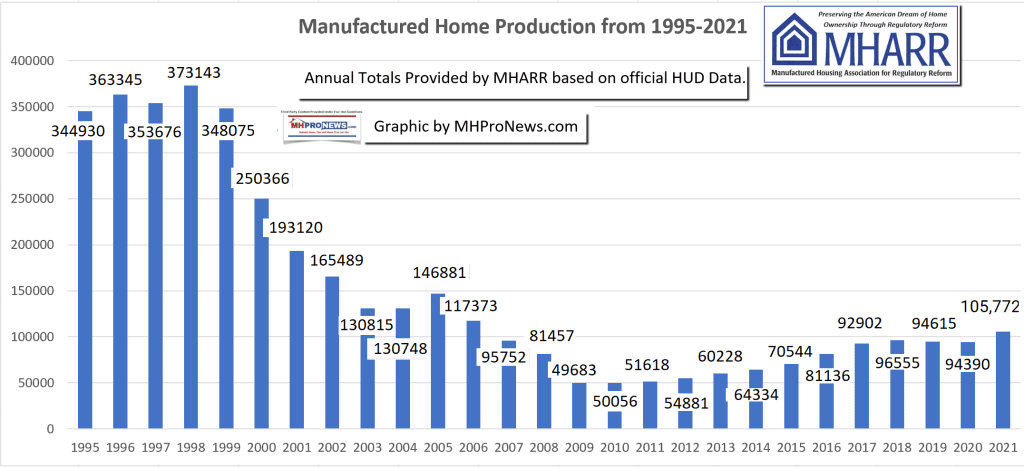
[cp_popup display="inline" style_id="139941" step_id = "1"][/cp_popup]
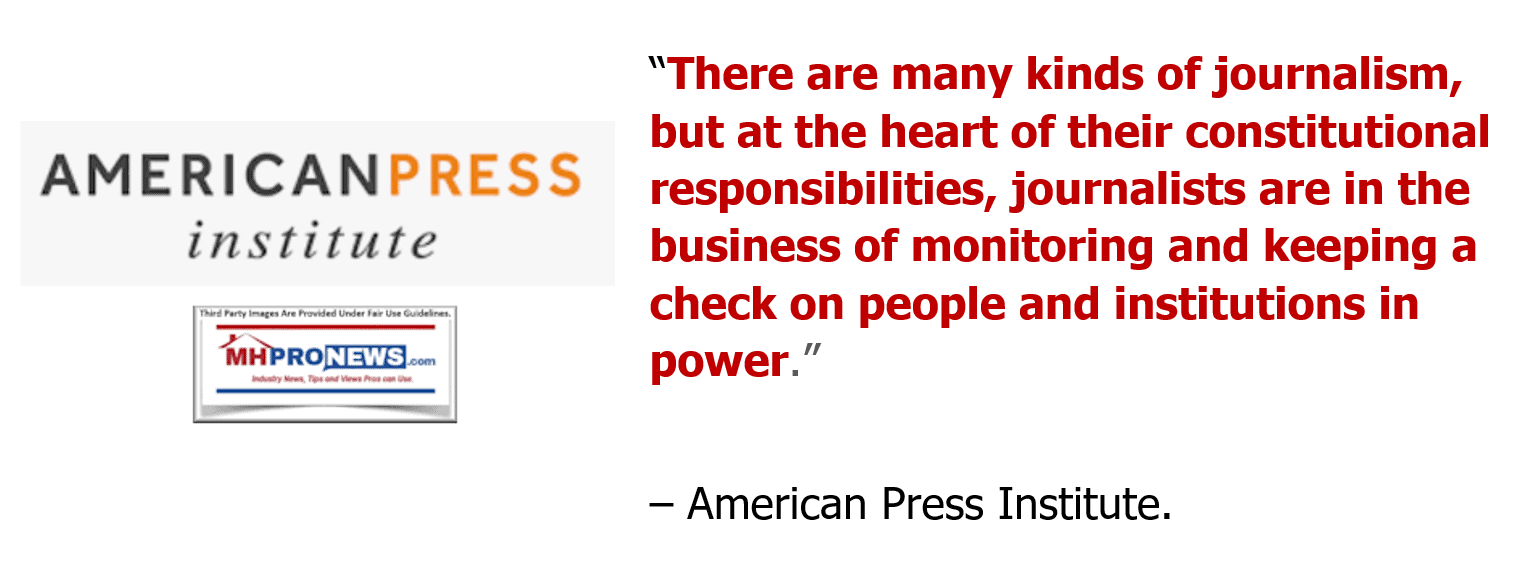
Stay tuned for more of what is 'behind the curtains' as well as what is obvious and in your face reporting that are not found anywhere else in MHVille. It is all here, which may explain why this is the runaway largest and most-read source for authentic manufactured home “News through the lens of manufactured homes and factory-built housing” © where “We Provide, You Decide.” © ## (Affordable housing, manufactured homes, reports, fact-checks, analysis, and commentary. Third-party images or content are provided under fair use guidelines for media.) (See Related Reports, further below. Text/image boxes often are hot-linked to other reports that can be access by clicking on them.)

By L.A. "Tony" Kovach - for MHProNews.com.
Tony earned a journalism scholarship and earned numerous awards in history and in manufactured housing.
For example, he earned the prestigious Lottinville Award in history from the University of Oklahoma, where he studied history and business management. He's a managing member and co-founder of LifeStyle Factory Homes, LLC, the parent company to MHProNews, and MHLivingNews.com.
This article reflects the LLC's and/or the writer's position, and may or may not reflect the views of sponsors or supporters.
Connect on LinkedIn: http://www.linkedin.com/in/latonykovach
Related References:
The text/image boxes below are linked to other reports, which can be accessed by clicking on them.




